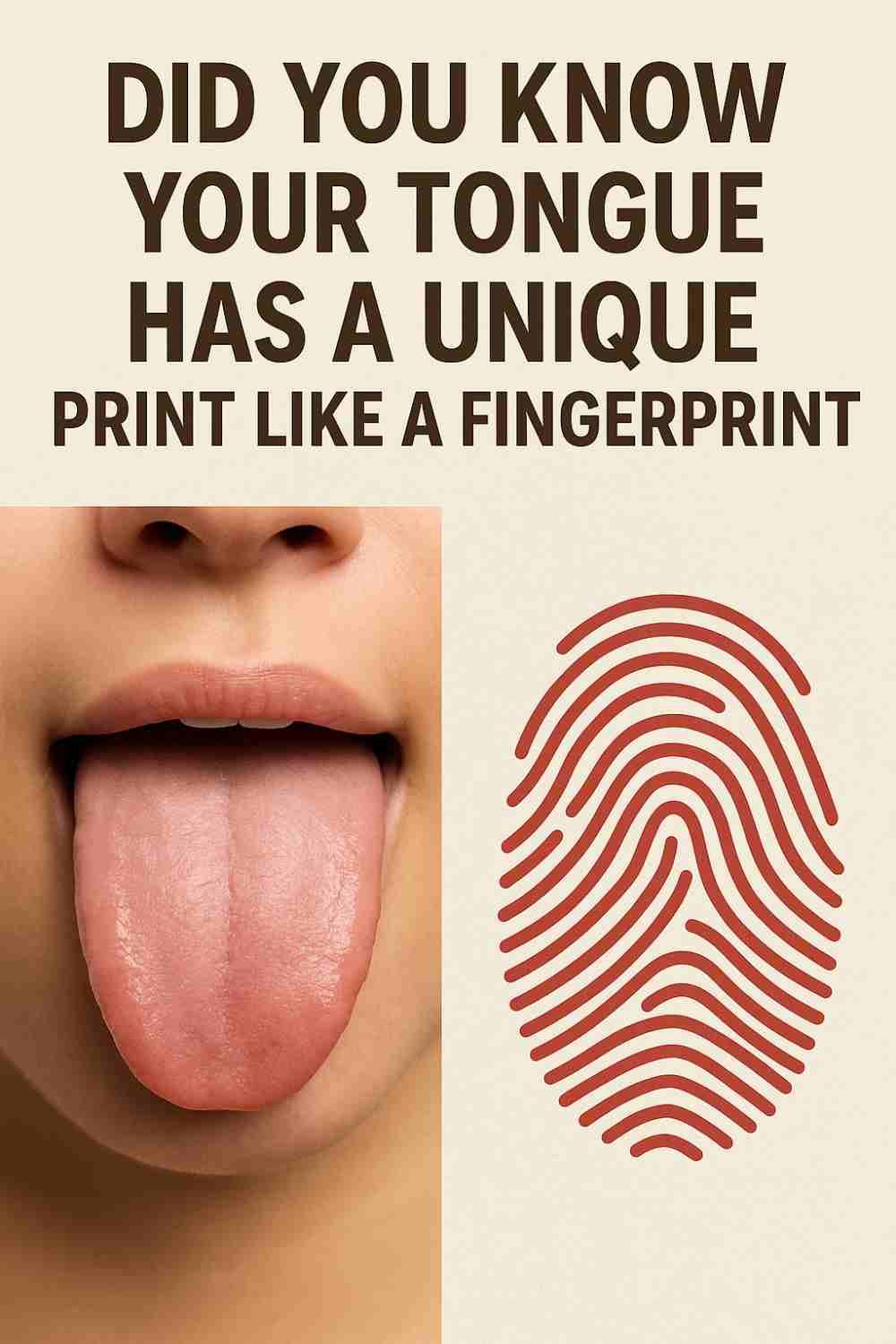 You’ve heard of fingerprints. You’ve probably even memorized yours after unlocking your phone a thousand times. But here’s something that’ll make you pause mid-scroll: your tongue has its own unique print too.
You’ve heard of fingerprints. You’ve probably even memorized yours after unlocking your phone a thousand times. But here’s something that’ll make you pause mid-scroll: your tongue has its own unique print too.
Yeah, you read that right. While you were busy worrying about passwords and face ID, your tongue was sitting there, quietly being one of the most distinctive parts of your body. Forget about identical twins sharing DNA—no two tongues are alike. Not even close.
Why Your Tongue is More Than Just a Taste Tester
We don’t give tongues enough credit. They’re not just floppy muscles that help you lick ice cream or embarrass yourself with poorly timed jokes. They’re biological marvels.
Think about it:
Your tongue can detect five basic tastes (sweet, salty, sour, bitter, umami).
It helps you speak, swallow, and—let’s be real—judge food like a Michelin critic.
And now, science says it’s as unique as your fingerprint.
So why isn’t anyone scanning tongues at airports yet?
The Science Behind Tongue Prints (Yes, It’s a Thing)
Researchers have known for years that tongues have distinct patterns. The surface isn’t just a random mess of bumps and grooves. It has shape, texture, and even blood vessel patterns that are completely yours.
In fact, studies suggest tongue prints could be more secure than fingerprints for identification. Why? Because while fingerprints can wear down (thanks, manual labor), your tongue stays safely tucked inside your mouth, protected from the elements.
How Would Tongue Scanning Even Work?
Imagine walking into a high-security facility, and instead of a retina scan, a robotic voice says, “Stick out your tongue, please.”
It’s not as far-fetched as it sounds. Some biometric systems already use tongue vein recognition, analyzing the unique network of blood vessels beneath the surface. And unlike fingerprints, you can’t exactly leave a “tongue print” on a glass by accident.
(Though, let’s be honest—someone, somewhere, has tried licking a crime scene clean.)
The Weird, Wild World of Biometrics
We’re living in an age where your body is basically a walking security system. Fingerprints, iris scans, voice recognition—even your ear shape can ID you. But the tongue? That’s next-level.
Here’s the kicker: your tongue print changes slightly over time. Not enough to make it unrecognizable, but enough to keep biometric scanners on their toes. It’s like your mouth’s way of saying, “Nice try, hackers.”
Could Tongue Prints Replace Passwords?
Maybe. But let’s be real—would you rather type in a password or lick your phone to unlock it?
There are obvious… hygiene concerns. Still, in a world where people will stick their faces into 3D scanners without a second thought, licking a sensor doesn’t seem that weird.
Fun Facts About Tongues (Because Why Not?)
Since we’re already deep in tongue trivia, let’s throw in some bonus weirdness:
Your tongue is the only muscle that works without skeletal support. It’s basically the freelancer of your body—does its own thing.
The average tongue is about 3 inches long. (Go ahead, measure yours. We’ll wait.)
Blue whales have the biggest tongues—up to 5,000 pounds. Imagine that thing getting a print scan.
Final Thought: Your Tongue is a Secret Superpower
Next time you’re sipping coffee or arguing about pizza toppings, remember: your tongue isn’t just along for the ride. It’s a one-of-a-kind identifier, a taste-bud-covered wonder, and possibly the future of security tech.
So, the next time someone asks for your fingerprint, just smile and say, “Nah, how about my tongue instead?”

